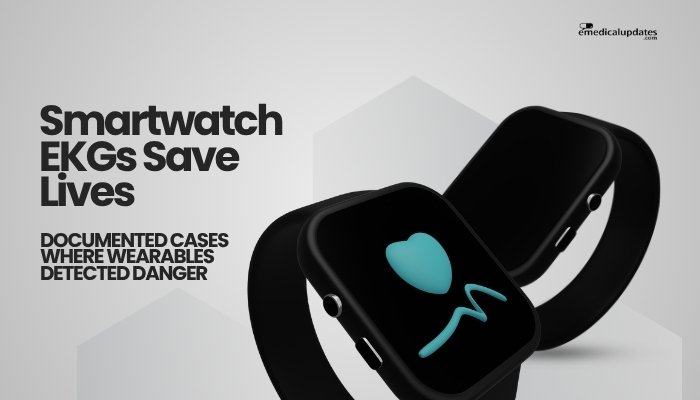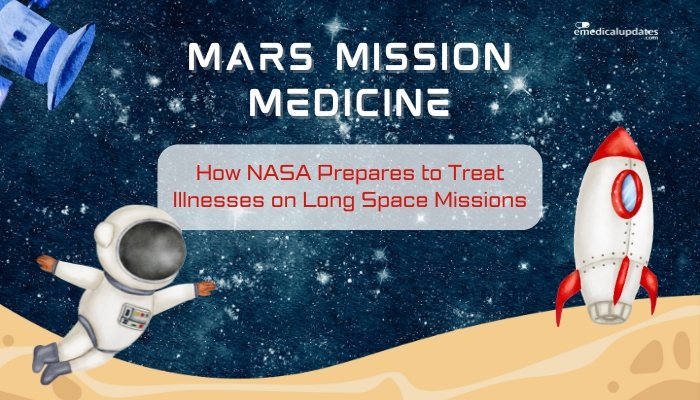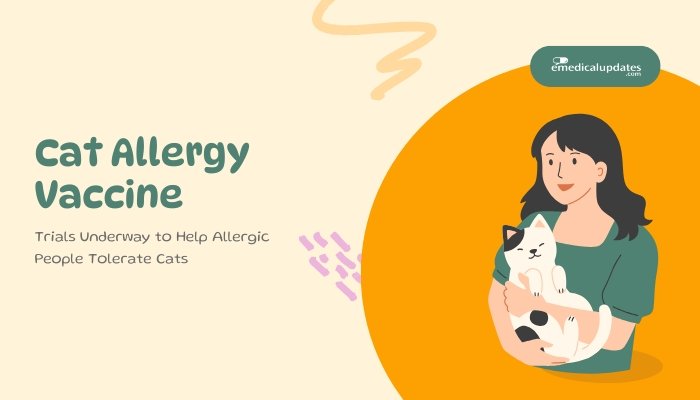Introduction
Dengue fever is a viral illness spread by Aedes mosquitoes, known for its ability to cause intense outbreaks in tropical and subtropical regions. Children living in areas with year-round mosquito exposure are especially vulnerable to repeated dengue infections. Some cases can progress to severe forms, including dengue hemorrhagic fever, placing a significant burden on communities.
While preventive measures such as mosquito control and personal protection remain essential, recent progress in vaccine development provides new opportunities to reduce transmission and mitigate disease severity in children.
Over the past several decades, the World Health Organization (WHO) and various public health institutions have prioritized dengue prevention. Strategies generally include vector control—removing breeding sites and using insecticides—and education campaigns on avoiding mosquito bites.
Yet, these steps alone have not stemmed the rising global incidence of dengue. The emergence of vaccine candidates offers a chance to protect children more directly. Vaccination might also reduce hospitalization rates and economic losses in endemic regions.
This article examines dengue’s impact on children, the science behind new vaccines, and how these vaccines fit into broader public health strategies. We will explore the main vaccine options, safety considerations, and the path to large-scale adoption.
By the end, you will understand both the potential and the challenges of vaccinating children against dengue, an illness that continues to test the resilience of healthcare systems worldwide.
Understanding Dengue Fever
Virus and Transmission
Dengue is caused by four related serotypes of the dengue virus (DENV-1, DENV-2, DENV-3, and DENV-4). All four serotypes can induce similar clinical manifestations, including fever, rash, and pain in the muscles or joints. Once a child is infected with one serotype, they gain partial immunity to that specific type but remain susceptible to the others. Subsequent infection with a different serotype sometimes leads to severe disease, a phenomenon called antibody-dependent enhancement (ADE).
The Aedes aegypti mosquito is the principal vector, thriving in urban settings where standing water in containers provides breeding sites. These mosquitoes bite mostly during the daytime. Because they inhabit areas close to human dwellings, controlling them requires diligent efforts from communities and health authorities. Aedes albopictus can also spread dengue, but its role varies by region.
Disease Burden
The global incidence of dengue has grown over the past few decades, with more than half the world’s population now at risk. Children often present with more complications because their immune systems are still maturing, and repeated exposure can result in more severe disease. According to WHO estimates, hundreds of millions of infections occur annually, though many go unreported because clinical symptoms range from asymptomatic to acute febrile illness.
Severe dengue—sometimes called dengue hemorrhagic fever or dengue shock syndrome—poses the greatest threat. This condition can include fluid leakage, bleeding tendencies, and shock. Children may require hospitalization for supportive treatments such as fluid replacement and close monitoring. Deaths still happen when care is delayed or resources are scarce.
Economic and Social Impact
For families in endemic regions, repeated dengue outbreaks cause interruptions in daily life. Parents may miss work or face extra costs for a child’s hospitalization and medication. In turn, local health systems absorb the burden of large-scale outbreaks, with limited capacity to handle surges in demand. Efforts to reduce cases—through vector control and education—stretch government budgets and hamper other public health priorities.
School attendance can also suffer when children become ill or if parents keep them home to avoid infection. Extended dengue seasons, exacerbated by climate change, mean that communities struggle to fully recover before the next wave hits. A safe, effective vaccine for children can help break this cycle, complementing ongoing prevention measures.
Traditional Dengue Prevention Methods
Mosquito Control
Historically, dengue prevention centers on controlling mosquito populations. Strategies include:
- Source Reduction: Eliminating containers or areas with standing water, such as discarded tires, flower pots, or open barrels.
- Insecticides: Spraying or fogging around households to kill adult mosquitoes. Larvicides can treat water containers not easily emptied.
- Community Programs: Teaching families about covering water storage units and using screens on doors and windows.
However, mosquitoes adapt quickly, and insecticide resistance has grown in many regions. Despite improvements in these tactics, the incidence of dengue keeps climbing, underscoring the need for additional interventions.
Personal Protective Measures
In many communities, people rely on:
- Bed Nets: Especially impregnated with insecticides, used during daytime naps or overnight.
- Repellents: Applied to skin or clothing.
- Appropriate Clothing: Long sleeves, pants, and socks to reduce exposed skin.
While these measures are helpful, they require consistent use and can be challenging to maintain for children, who spend more time outdoors in some settings. Add to that cost considerations and supply shortages. As a result, families often face an incomplete shield against dengue.
Surveillance and Early Detection
Early detection of outbreaks can trigger targeted vector control in hotspots. Health authorities track suspected cases and confirm them via laboratory tests. Still, mild or subclinical dengue often goes unreported, complicating accurate assessments. Gaps in surveillance data also hinder swift responses, meaning communities might be in the midst of a full outbreak before interventions ramp up. Vaccination can augment existing surveillance by reducing the number of susceptible individuals, hopefully minimizing outbreak severity.
Development of Dengue Vaccines
Scientific Challenges
Vaccine developers have faced significant hurdles in formulating a broadly protective dengue vaccine. Each serotype can trigger a unique immune response. A vaccine must ideally produce balanced immunity to all four, to prevent one serotype from slipping through or exacerbating disease. Imbalanced immune responses raise the risk of ADE, where partial immunity from one serotype can worsen infections with another.
Researchers have tried several vaccine platforms, such as:
- Live Attenuated Vaccines: Weakened viruses that stimulate robust immunity but carry a small risk of side effects.
- Inactivated Vaccines: Killed viruses that are safer but may be less immunogenic, often needing multiple boosters.
- Subunit Vaccines: Contain only specific viral components, requiring adjuvants to enhance immune response.
- Viral Vector-Based Vaccines: Use genetically engineered viruses to deliver dengue antigens.
Clinical Trials and Progress
Over the years, leading manufacturers and research institutions have progressed vaccine candidates from laboratory to clinical trials. Each candidate undergoes rigorous testing in phases:
- Phase I: Safety in healthy adult volunteers.
- Phase II: Expanded safety and immunogenicity in populations closer to the target demographic, sometimes including children.
- Phase III: Large-scale efficacy trials in dengue-endemic regions, measuring actual disease prevention rates.
Results so far highlight promising efficacy in many cases, yet complex patterns emerge regarding age groups, prior exposure to dengue, and differences in the local transmission environment. These findings shape the recommendations for vaccine usage and underscore the need for careful post-marketing surveillance.
Dengvaxia (CYD-TDV): The First Licensed Dengue Vaccine
Composition and Mechanism
Dengvaxia, developed by Sanofi Pasteur, is the first dengue vaccine to achieve licensure in multiple countries. It’s a tetravalent vaccine, meaning it includes components targeting all four dengue serotypes. It uses a yellow fever virus backbone, into which genes from each dengue serotype are spliced, stimulating immune responses against DENV-1 to DENV-4.
In clinical trials, Dengvaxia showed moderate efficacy in preventing symptomatic dengue, especially in older children and those with prior dengue exposure. The vaccine also reduced severe dengue cases and hospitalizations in certain groups.
Controversies and Lessons
The biggest debate around Dengvaxia involves the risk of ADE in certain children. Post-marketing data revealed that children who were dengue-naive (no past infection) and received the vaccine had a higher risk of severe dengue if they contracted the virus later. This led some countries to halt or adjust immunization programs. Scientific reviews concluded that the vaccine offers more benefit than harm in previously infected individuals but can pose issues for those without prior immunity.
Health authorities now recommend screening for seropositivity (i.e., confirming previous dengue infection) before administering Dengvaxia to children. This approach ensures that those who have never had dengue do not receive the vaccine, mitigating the ADE risk. This lesson shaped the design and rollout of subsequent vaccine candidates, emphasizing the importance of prescreening or improved formulas.
Role in Endemic Regions
For regions with high dengue transmission, many children may be infected at a young age. In these places, Dengvaxia could prevent additional or more severe infections among older, previously infected children. Programs must weigh the cost and logistics of serological testing to identify appropriate vaccine recipients. When properly implemented, Dengvaxia might reduce hospitalization rates and serious complications. Nonetheless, it is not a one-size-fits-all solution and requires careful public health coordination.
Next-Generation Vaccine Candidates
Takeda’s TAK-003
Another prominent vaccine, developed by Takeda, is a tetravalent live attenuated vaccine known as TAK-003. It features a DENV-2 backbone with chimeric elements from the other serotypes. Phase III trial data demonstrated encouraging protection against symptomatic and severe dengue across multiple age groups. Some initial findings suggest that it may elicit a robust response even in dengue-naive children, though ongoing research is clarifying details around age-based performance and infection history.
Butantan Institute’s TV003/TV005
A collaboration between the U.S. National Institutes of Health and the Butantan Institute in Brazil led to another live attenuated tetravalent candidate, often referred to as TV003 or TV005. Early results in Latin American trials indicate strong immunogenicity. Experts await further Phase III outcomes, especially the vaccine’s efficacy by serotype and among participants with no past dengue infections.
Other Approaches
Beyond these high-profile projects, smaller biotech firms and academic groups work on subunit or inactivated vaccines. Some are exploring advanced technologies, including messenger RNA (mRNA) platforms or genetically engineered viral vectors. These newer strategies may bypass some obstacles associated with live vaccines, such as worry about reversion to virulence or complicated cold-chain requirements.
While each candidate aims for broad coverage, differences in manufacturing, cost, and distribution will shape their ultimate use in real-world settings. A successful vaccine must not only be immunologically sound but also feasible to produce at scale, store in typical conditions, and administer widely.
Factors Influencing Vaccine Implementation in Children
Age Recommendations
Dengue risk starts early in life, but the exact age range for vaccination depends on clinical evidence about vaccine safety and efficacy. Some vaccines are approved for children above 9 years old, while others might target younger populations. In real-world programs, alignment with existing childhood immunization schedules is ideal to improve coverage. If a vaccine requires multiple doses, healthcare planners need to coordinate with routine visits for measles, polio, or other standard shots.
Prior Dengue Exposure
As highlighted by Dengvaxia’s experience, vaccination can be riskier for children with no prior infection. This can force countries to adopt serological testing—an extra logistical step requiring blood samples and laboratory analysis. Alternatively, a vaccine that is safe and beneficial for both dengue-naive and dengue-exposed children would simplify mass campaigns. Therefore, new candidates’ performance in naive populations is a key determinant of how easily they integrate into routine use.
Community Perception
Public acceptance of dengue vaccination is crucial. If communities remember controversies over safety or adverse events, trust may erode. Effective communication strategies must share transparent evidence on vaccine risks and benefits. Schools can play a role in building acceptance, as families often trust teachers and administrators for health recommendations. Clear guidelines from WHO or local health ministries can also stabilize trust, especially when they unify behind consistent safety data.
Duration of Protection
In an ideal world, a single series of shots would provide multi-year or lifelong immunity. However, vaccines vary in how long protective titers last. Some might require booster doses after a few years. Families are more likely to participate if boosters align with other routine vaccines or if data show strong, long-lasting efficacy. Regulators and manufacturers thus consider how to package recommended schedules for practical, sustainable usage.
Integrating Vaccination into Public Health Strategies
Combining with Vector Control
A dengue vaccine alone will not eliminate the virus if mosquito populations remain high. Health authorities can pair childhood vaccination programs with ongoing vector management, such as cleaning neighborhoods, applying larvicides, and mobilizing community action. When child vaccination lowers the susceptible pool, and vector control suppresses mosquito density, outbreaks might shrink in magnitude. This synergy can reduce the overall infection rate and ease the burden on healthcare systems.
Monitoring and Surveillance
Countries that roll out a dengue vaccine should reinforce their surveillance networks. Monitoring changes in the number of cases, hospitalizations, and severe forms will reveal whether the vaccine meets real-world effectiveness targets. Surveillance also helps identify shifts in circulating serotypes or unusual patterns of vaccine failure. Regular feedback can guide improvements, including adjusting dose schedules or developing targeted booster policies for certain populations.
Cost-Effectiveness Analyses
Decision-makers rely on cost-effectiveness studies to justify large-scale vaccine investments. Such research weighs vaccine costs, the expense of serological testing (if needed), and potential savings from fewer hospital visits and missed workdays. In many endemic countries, healthcare budgets are limited, so every dollar allocated to dengue vaccination must be considered carefully. If the data indicate significant reductions in disease burden, governments and global health agencies may jointly fund or subsidize the vaccine, facilitating broader coverage.
Potential Risks and Ethical Concerns
Antibody-Dependent Enhancement
ADE is the primary scientific worry in dengue vaccination, especially for children who have never been infected. If the vaccine-induced antibodies are not fully neutralizing for certain serotypes, subsequent infection might become more severe. Manufacturers address this by engineering balanced immune responses. Yet, cautious post-launch monitoring is needed to quickly detect any spike in severe cases among vaccinated kids.
Equitable Access
Rural or remote communities often have the greatest dengue burden but less infrastructure to distribute new vaccines. Achieving equitable access means tackling barriers like:
- Cold-Chain Requirements: Maintaining proper refrigeration during transport and storage.
- Health Worker Training: Ensuring local staff can administer the vaccine safely, handle side effects, and monitor coverage.
- Financial Constraints: Funding from international donors or subsidies may be essential so that impoverished families do not face out-of-pocket costs.
Failing to address these issues could concentrate vaccine benefits in urban centers, leaving rural children at high risk.
Public Communication
Past vaccine controversies emphasize the importance of transparent messaging. Authorities must share real risks, such as the possibility of mild side effects, and highlight how the vaccine reduces serious complications. Misinformation travels quickly, so a robust communication plan helps dispel rumors that could derail immunization efforts. Ethical guidelines also demand that parents give informed consent, understanding the potential benefits and drawbacks.
Challenges in Research and Development
Diverse Epidemiological Settings
Dengue transmission patterns differ across regions. In some places, all four serotypes circulate simultaneously; in others, certain serotypes predominate, and epidemics come in seasonal waves. Vaccine trials must capture this variability to prove broad efficacy. A vaccine might perform well in one region but differently in another with unique serotype dynamics. Long-term follow-up over multiple seasons is therefore essential to gauge how vaccine-induced immunity handles evolving conditions.
Pediatric Immune Systems
Children’s immune systems differ from adults, often showing variable responses to live attenuated or inactivated vaccines. Younger immune systems can be more reactive or require specialized dosing to achieve protective antibody levels. Age-related immunization schedules attempt to optimize the window for robust seroconversion. Trials typically stratify participants by age, producing separate data sets for toddlers, school-aged kids, and adolescents.
Managing Coinfections
In tropical environments, children might simultaneously face other infections like chikungunya, Zika, or malaria. These co-circulating pathogens can influence immune status or confound the diagnosis of febrile illnesses. Vaccine research must account for cross-reactivity and ensure that children, especially with underlying nutritional deficiencies or other health issues, respond effectively to the dengue vaccine. This complexity further underscores the need for careful field research, often in multi-country partnerships.
Case Studies and Regional Programs
Philippines and Dengvaxia
The Philippines was one of the first nations to adopt a school-based dengue vaccination program using Dengvaxia. Rapid rollout saw hundreds of thousands of children immunized. However, controversy erupted when data implied that dengue-naive children could be at higher risk of severe disease post-vaccination. Public outcry led to program suspension, fueling vaccine hesitancy and political debate.
Subsequent investigations concluded that Dengvaxia remains beneficial for those previously infected. The Philippines experience underscores the critical importance of thorough risk evaluation, transparent communication, and timely data analysis. Health authorities learned that more robust screening processes and engagement with local communities are essential before large-scale implementation.
Brazil’s Multi-Pronged Approach
Brazil, with multiple dengue serotypes circulating, invests in both vaccine research and integrated vector control. The Butantan Institute leads domestic vaccine trials, focusing on children in high-incidence regions. Combining future vaccine availability with improved sanitation and mosquito control could drastically lower dengue hospital admissions. Preliminary data from Phase II trials are promising, but large-scale adoption depends on the outcome of final efficacy analyses.
Southeast Asia’s Experience
Countries like Thailand, Vietnam, and Indonesia face dengue year-round, placing significant emphasis on pediatric vaccinations as a possible game-changer. Some started with pilot programs using Dengvaxia for older children with confirmed prior infection. Ongoing Phase III trials for other vaccine candidates in the region might yield widely adoptable solutions. Governments in these areas typically run large immunization campaigns for diseases like measles or polio, offering a blueprint for future dengue vaccine drives if the right vaccine proves safe and effective for broad pediatric use.
The Path Forward
Innovations in Vaccine Platforms
As new technologies mature, researchers may develop a universal tetravalent vaccine that works safely for all ages, regardless of serostatus. mRNA-based approaches could accelerate the design of next-generation dengue vaccines, allowing rapid updates if the virus evolves or if certain serotypes become more prevalent. While these approaches remain in experimental phases, they illustrate the dynamic nature of vaccine research.
Personalized Strategies
Some experts propose tailored vaccination based on a child’s serological profile. If a simple point-of-care test can confirm past infection, healthcare workers can safely administer a vaccine like Dengvaxia. For naive children, they might offer a different product, possibly one that has shown efficacy in that subgroup. This precision approach could maximize benefits while minimizing ADE risk, though logistical challenges remain, especially in resource-limited settings.
Education and Advocacy
Nonprofit groups and health organizations must keep raising awareness about dengue’s risks and the potential of new vaccines. Community involvement from the outset fosters trust. If parents understand how the vaccine was developed, tested, and monitored, they may be more receptive. Partnerships between ministries of health and international bodies (e.g., WHO, UNICEF, Gavi) can provide technical, financial, and operational support for vaccination campaigns.
Potential Outcomes and Goals
Reduced Hospitalizations and Mortality
A successful pediatric dengue vaccine can significantly cut pediatric hospital admissions. Children with partial immunity are less likely to develop hemorrhagic fever or shock. Fewer hospitalizations translate into fewer disruptions for families and lower medical expenditures. Over time, this reduces strain on healthcare systems, making them more resilient during outbreaks.
Herd Immunity Effects
When a substantial portion of the young population gains immunity, overall community transmission can diminish. The exact threshold for dengue herd immunity is uncertain, given the role of mosquitoes and multiple serotypes. Nevertheless, a vaccine-based drop in symptomatic infections might break local transmission cycles. This benefit can extend to older or more vulnerable populations not reached by direct vaccination.
Progress Toward Elimination?
Complete dengue elimination remains unlikely in the near term, but sustained coverage with a potent vaccine might push incidence to very low levels in certain regions. Combined with robust vector control, some localities could see major progress. Achieving true elimination would probably require a global coalition, improved diagnostics, and continued vigilance, reflecting a complex interplay between human hosts, mosquito vectors, and environmental factors.
Frequently Asked Questions
- At what age can children receive a dengue vaccine?
- It varies by product. Some are approved for ages 9–16, while others aim to cover younger kids. Guidelines from health authorities specify recommended age ranges based on clinical trials.
- How many doses are needed?
- Most dengue vaccines require multiple doses over several months for optimal protection. The exact schedule depends on the vaccine’s formula and trial results.
- Do children need a blood test before vaccination?
- Certain vaccines, such as Dengvaxia, require confirming past dengue infection to avoid safety risks. Others may not need this, but ongoing studies will clarify final recommendations.
- Is dengue vaccination a substitute for mosquito control?
- No. Mosquito control, personal protection, and environmental management remain essential. Vaccination works best alongside these established measures.
- What if my child has never had dengue?
- Some vaccines demonstrate protection even in naive children. Others might carry a risk of higher severity after vaccination if the child is naive. Always consult local health guidelines and the latest evidence.
- Can a vaccinated child still get dengue?
- Vaccines are not 100% protective, so breakthrough infections can happen, often with milder symptoms. Monitoring and medical advice are still necessary for any child with suspected dengue.
Conclusion
Dengue remains a formidable challenge in many tropical and subtropical regions, particularly for children whose developing bodies are vulnerable to repeated infections. Standard precautions—mosquito control, personal repellents, and community awareness—have helped reduce some disease impact but are insufficient to curb rising case numbers. Vaccines promise a new line of defense, one that directly primes children’s immune systems to fight off or reduce the severity of this potentially life-threatening illness.
The first licensed vaccine, Dengvaxia, revealed both the promise and complexity of dengue immunization. Issues such as prior dengue exposure and the risk of ADE inform how public health agencies approach broader vaccine deployment. Upcoming candidates from Takeda, the Butantan Institute, and other developers hold the potential to simplify these concerns, hopefully providing broader protection without the need for large-scale serological screening. Nevertheless, extensive safety monitoring, cost considerations, and transparent communication with parents remain core prerequisites for a successful rollout.
As multiple products near advanced trial stages, health planners anticipate forging integrated strategies that combine vaccination with persistent vector control. This synergy can slow dengue’s transmission and drastically lower pediatric hospital admissions. Parents can then feel reassured, and children can lead healthier, more active lives. While total eradication may be distant, each incremental improvement in vaccine availability, safety, and effectiveness moves endemic regions closer to a future where dengue’s burden is substantially diminished. For millions of children living in risky areas, this progress stands to transform daily life, enabling them to grow and thrive without the constant threat of severe dengue hovering overhead.
References
- WHO. Dengue guidelines for diagnosis, treatment, prevention and control. Geneva: World Health Organization.
- Bhatt S, Gething PW, Brady OJ, et al. The global distribution and burden of dengue.
- Halstead SB. Pathophysiology and immunology of dengue hemorrhagic fever.
- Wilder-Smith A, Ooi EE, Horstick O, Wills B. Dengue.
- Sanofi Pasteur. Dengvaxia (CYD-TDV) vaccine clinical trial data.
- Sridhar S, Luedtke A, angevin E, et al. Effect of dengue serostatus on dengue vaccine safety and efficacy.
- Takeda. TAK-003 dengue vaccine trial updates.
- Biswal S, Borja-Tabora CF, Martinez Vargas L, et al. Efficacy of the Takeda tetravalent dengue vaccine.
- Butantan Institute. Dengue vaccine research and development progress.
- Sabchareon A, Wallace D, Sirivichayakul C, et al. Clinical trials of dengue vaccine in children.
- Guzman MG, Harris E. Dengue.
- Horstick O, Tozan Y, Beatty M. Cost-effectiveness of dengue vaccines and vector control.







